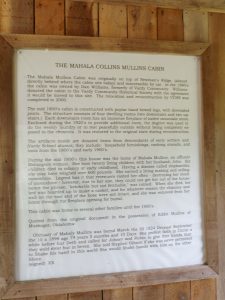The section of mountains I grew up in is called East Tennessee, Appalachia. I lived in a small, rugged, rural, mountain town called Sneedville, or Hancock County. This area is particularly known for its Melungeon heritage. I was born and raised here but never remember hearing the word “Melungeon” until later years. A term I had heard of from some relatives was called the “Pluto Family.” My second great-grandmother, Ida, referred to these people as “muhladders” (mulattos). This particular term can be found listed in the census records during the late 1800’s to early 1900’s. These were basically terms with the same meaning (a mixed race consisting of a white/dark people). This word first appeared in some church records during the nineteenth century to describe people of mixed ancestry. Melungeons were considered by outsiders to be a mixture of European, Native American, and African race. These people were looked down upon simply for the color of their skin. Back in those days, they could not vote or take part in many aspects of the community.
I remember my grandmother, Ethel, telling me a story about how she had never seen a very dark-skinned person until she was out in the fields one day working with her mother. She was just a very young girl at the time. She said it scared her so bad she ran to her mother crying. Her mother consoled her and taught her about how people are different. Not very far (maybe within minutes) of where my grandmother grew up, a famous “Melungeon” by the name of “Big Haley” lived with her large family. She had about twenty children. They lived high upon the mountain near the TN/VA border in a small cabin. From this cabin, she sold moonshine from her bedroom window. Through the years, stories about Big Haley have caused more rumor than fact. In documents written by William P. Grohse (on record at the Vardy Historical Society), relatives confirmed Haley as being a good woman who just wanted to make an honest living and raise her large family.
Haley was known for her big size (possibly closer to 500 lbs or more), hence the reason she sold shine from her bedroom window. Her children or husband John most likely helped brew the mountain drink. When the sheriff came to arrest her, it was to no avail as they couldn’t get her out of the house. They always stated she was “ketchable but not fetchable.” When she died, a portion of the wall had to be taken down just to get her out for burial. She was buried on the same ridge top where she lived.
In later years, the cabin was moved to the bottom of the ridge and currently sits across from the Vardy Church as part of their museum. I visited there several years back and took some photos of how it looked. This museum holds many records and documents about the people they called “Melungeons.” Looking at the surnames listed, it appears I am also included in what they call a “Melungeon.” I couldn’t be more proud of my heritage than I am today!




